Common coffee varieties Daquan Coffee comes from Iron pickup Coffee beans
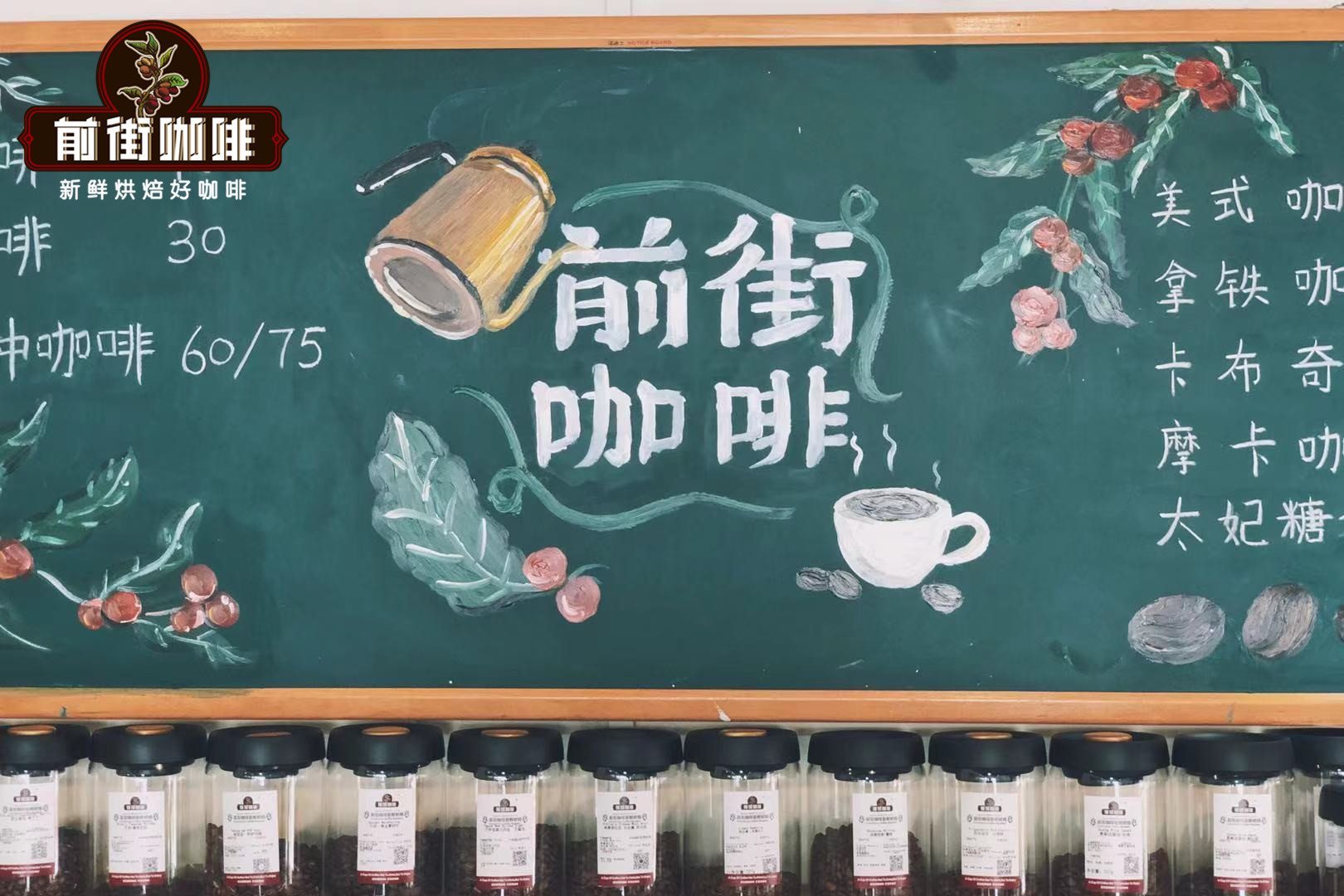
Professional coffee knowledge exchange more coffee bean information please follow the coffee workshop (Wechat official account cafe_style)
As a tropical plant, coffee has a wide variety, such as the more common tin card, bourbon, Kaddura and Kaduai, all of which belong to Arabica. The front street of this article introduces you to the common Arabica coffee beans.
Arabica originated from this branch in Ethiopia and has higher requirements for altitude. The same variety planted in different regions will produce different flavors. Next, the front street details the more common Arabica coffee branch.
Ethiopian native species (Heirloom)
The term "native species" usually refers to native species in Ethiopia, and many wild coffee trees can still be found. It is estimated that there are about 10000 to 15000 varieties of coffee in Ethiopia today, most of which have not yet been formally genetically identified. Due to the large population of local native species, it is difficult for farmers to subdivide these varieties, mainly by mixed planting and mixed harvest, which explains why Ethiopian coffee beans vary in size.
Sidamo and Yejasuefi are famous boutique coffee producing areas in Ethiopia. Many coffee beans from Ethiopian producing areas are listed on the front street coffee bean list. When testing Ethiopian coffee beans in the front street, it is found that the washed beans in Yejasuefi producing area have extremely strong aroma, full of citrus and floral aromas, and taste delicate and elegant. On the other hand, the sun beans in the Sidamo area have unrestrained fruit aromas, unique and delicious taste.

Front Street Coffee Yega Sheffield Ding Ding Coffee beans
Country of origin: Ethiopia
Producing area: Yega Xuefei producing area
Altitude: 2000-2100 m
Variety: original species
Treatment: washing treatment

Qianjie Coffee Sidamo Flower Quihan Bella Coffee beans
Country of origin: Ethiopia
Producing area: Gujimbela, Sidamo
Altitude: 2050 m
Variety: original species
Treatment: sun treatment

Iron pickup (Typica)
Iron pickup, one of the oldest coffee varieties in the world, is native to the primeval forests of Ethiopia. The variety of iron pickup coffee is excellent, the top leaf is bronzed, with excellent cleanliness and consistency, with lemon sour taste, sweet aftertaste. But the iron pickup has a disadvantage, poor disease resistance, and the output is not high. When I received the raw beans of Iron pickup Coffee in the front street, I found that the two ends of the raw beans were slightly warped, the shape was oval, slender and flat, and the midline was in the shape of "S". From the side of the bean body is flat, even if the altitude of the planting area is different, the side thickness of raw beans will not be too different.
Iron pickups have evolved many different varieties with the environment and planting techniques, and their disease resistance and yield will also change. For example, the Jamaican Blue Mountain variety on the front street bean list is the iron pickup, while the coffee beans of Papua New Guinea, known as the Little Blue Mountain, are also iron pickups and are introduced from the Blue Mountains. in addition, the environment it grows is very similar to the mountains of Blue Mountain Coffee, so the name of Papua New Guinea's Little Blue Mountain Coffee comes from this. The front street iron pickup represents coffee beans:
Front street coffee Jamaica Blue Mountain No. 1 coffee beans
Producing area: blue Mountain producing area of Jamaica
Manor: Clifton
Altitude: 1310 m
Variety: iron pickup
Treatment method: washing treatment

Front Street Coffee Hawaiian Kona Coffee beans
Country: United States
Producing area: Kona, Hawaii
Manor: Queen's Manor
Altitude: 1100 m
Treatment method: washing treatment
Variety: iron pickup

Qianjie coffee Yunnan Huaguoshan coffee beans
Producing area: Baoshan, Yunnan, China
Altitude: 1200 m
Variety: iron pickup
Treatment method: washing treatment

Java (Java)
Java was originally a coffee tree species born in the primeval forest of Ethiopia, collected by local ethnic groups, and then spread to Indonesia through Yemen, where it was named Java. After spreading to Indonesia, the Javanese variety spread first to the nearby Timor island group, and then to Cameroon in East Africa, where it was first released for farmers in 1980.
At present, Java is mainly cultivated on the island of Java. The Provera Coffee Research Center (Jember Coffee Research Center) in East Java introduced local varieties from India and planted them in Java farmers. The varieties belong to S795 and are artificially cultivated by locals known as Jember.
On the front street, a Java coffee from Indonesia has passed the cup test, and it is believed that this bean can show the delicate aroma of Java, with relatively soft acidity, delicate taste and good balance. Java coffee has a better aroma and acidity than coffee from Sumatra and Sulawesi.

Java spread to Central and South America, and under the leadership of breeding expert Benoit Bertrand, Java was introduced to Costa Rica. With the cultivation of the Java variety in Central America, the Nicaraguan Mierisch family took the lead in bringing this variety to the attention of the boutique coffee market; and in order to distinguish between Indonesian Java coffee and Java varieties, the Central American Java variety was named JAVA NICA (meaning Java species from Nicaragua). Java coffee has come to prominence in Central and South America in recent years, came to Bolivia and was carefully nurtured by the Rodriguez family.

After genetic comparison, Java was found to be a descendant of Ethiopia called Abysinia, a native ancient variety. This lineage is actually the same lineage, the same origin, and also has excellent floral fruit flavor, which is why Java is often called the cousin of Rose Summer.
Java fruits and seeds are very long, shoots are brassy, plants are quite tall, but yield is low. Because of its outstanding flavor, it is not inferior to rose summer, and has stronger resistance to leaf rust and coffee fruit disease, which is very suitable for smallholder cultivation.
Indonesia West Java Aimani coffee beans
Production area: Tiegula Mountain, West Java
Altitude: 1400-1600m
Type: S795 Jember
Treatment method: Sunlight honey treatment

Bolivia Waliki Manor Cocoa Sun Java
Bolivia Waliki Coco Natural Java
Coffee producing area: la Paz La Paz
Planting altitude: 1600 m
Coffee variety: Java Java
Treatment method: cocoa sun treatment Coco natural

Elephant bean (Maragogype)
Elephant beans are the most famous variety of beans in Arabica. It was found in the Brazilian Bahia called Maragogype that the bean body is at least three times larger than the average Arabica, so it is known as the elephant bean. The palate is mild and slightly sour and sweet. In 1870, it was first found in the Maragogype bean-producing area of Bahia state in northeastern Brazil that elephant beans had a poor flavor in the low altitude area, but better flavor at high altitude, mild sour taste and sweet fragrance.

Elephant beans (right)
Qianjie has been working to establish relevant files on coffee beans, so of course Qianjie can't miss this elephant bean coffee bean. Qianjie Cup has tested many kinds of elephant beans from different producing areas, and thinks that the flavor of elephant beans in Nicaraguan coffee producing areas is very good. Among them, the elephant bean coffee grown at Mamana Manor from Nicaragua is the best.

Bourbon (Bourbon)
It is a mutant variety of iron pickup, and it is one of the oldest coffee varieties in the world. Bourbon raw beans are round and small in shape. After spreading from southwestern Ethiopia to Yemen, the shape of beans changed from thin to round, and the particles became larger and thicker. Comparing raw beans at different elevations in the front street, it is found that raw beans grown at low elevations are thinner than those at high elevations. It was named bourbon in 1715 after France transplanted round beans from Yemeni mocha to the island of Bourbon on the east coast of Africa (renamed Reunion after the French Revolution).
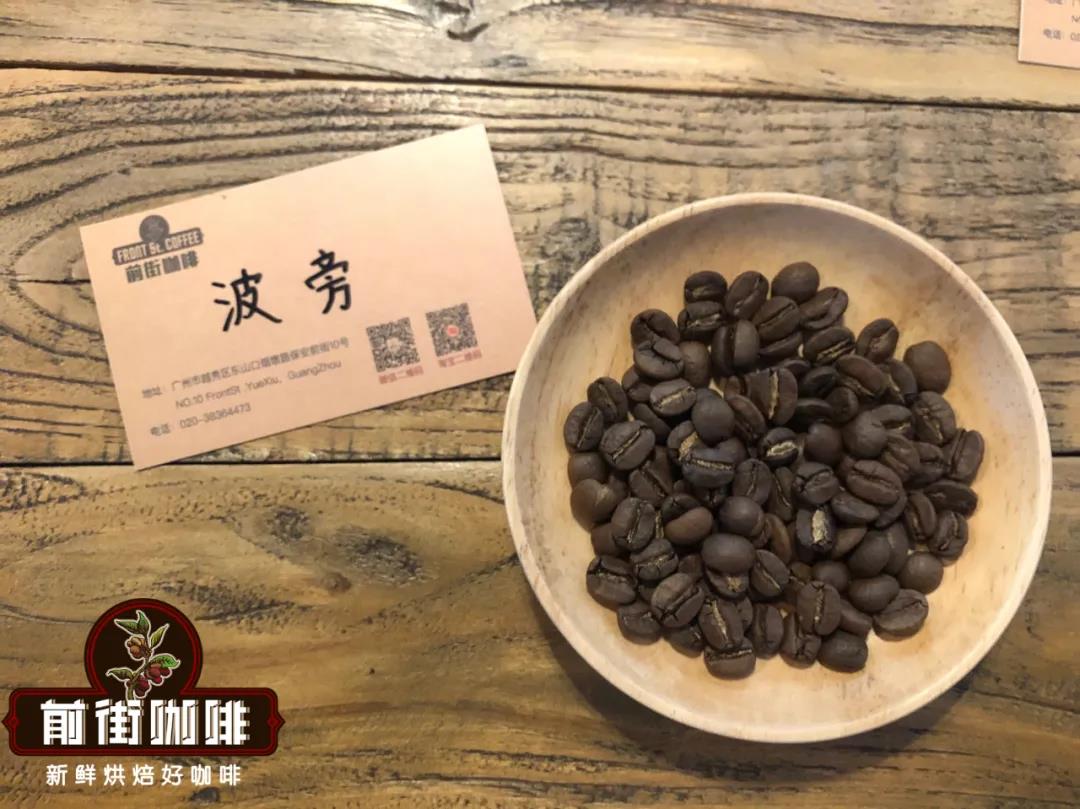
Bourbon has complex acidity, the sweetness of caramel and a balanced flavor. The ripe fruit of bourbon is red, yellow and pink. According to the color of mature coffee, it is called red bourbon, yellow bourbon and pink bourbon. Red bourbon is the most common. The coffee variety of Brazilian rations beans in front street coffee is red bourbon. Although bourbon has a higher yield than iron pickup, it is also vulnerable to leaf rust, berry disease and nematodes.
Front Street Coffee Brazilian Red Bourbon Coffee beans
Producing area: Minas South, Brazil
Altitude: 1000 m
Variety: red bourbon
Treatment: half-sun

Front Street Coffee Burundi Heart of Africa Coffee beans
Producing area: Luthona town
Altitude: 1400-1700 m
Variety: bourbon
Treatment method: washing treatment

Yellow bourbon
The fruit of yellow bourbon appears yellow when it is ripe, which was first discovered in Brazil in 1930. Yellow bourbon was mutated by crossing a bourbon with red fruit with a variety of iron pickup with yellow fruit called "Amerelo de Botocatu" (discovered in Sao Paulo in 1871). Because of its low yield and resistance to wind and rain, it has not been widely planted, but it will have excellent flavor performance when planted at high elevations.

For example, the Brazilian Queen Manor Yellow bourbon of Qianjie Coffee presents a sweet and soft fruit flavor, obvious nutty flavor, balanced and supple acidity, weak and clean bitterness, rich chocolate aroma and nutty flavor, bright and refreshing taste.
Front Street Coffee Brazilian Queen Manor Coffee beans
Producing area: Mojiana, Brazil
Altitude: 1000-1950 m
Variety: yellow bourbon
Treatment: half-sun
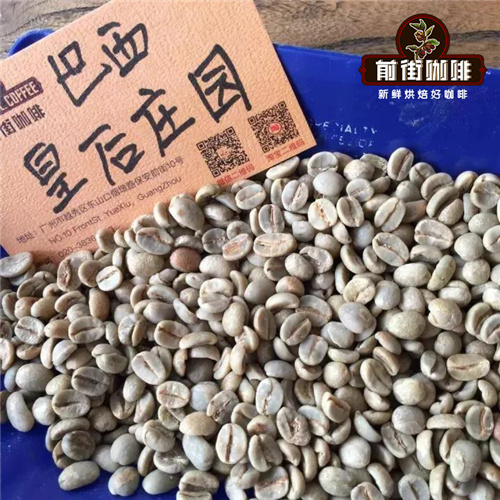
Pink Bourbon
Pink bourbon coffee fruit ripens pink and belongs to a very rare new variety, which is bred by crossing red bourbon and yellow bourbon. Bourbon powder is rare because the color of the coffee fruit is ultimately determined by recessive genes in the pollen grains. Among the selected pollen grains to be crossed, there were both yellow and red genes that tended to yellow bourbon, and these were recessive genes that easily interfered with each other. At first it was mixed with other bourbons and caduras, then picked separately and treated separately. Currently it is mainly cultivated in Colombia and Guatemala.

There is a pink bourbon on the bean list on the front street, it is Isabella coffee from Colombia, and the overall flavor is more citrus, floral, honey and berry flavor.
Front street coffee Colombian Isabella coffee beans
Producing area: Cymbidium Colombians
Altitude: 1760 m
Variety: pink bourbon
Treatment method: semi-washing

Pointed body bourbon (Bourbon Pointu)
In 1810, it was found in Bourbon Island that the pointed bourbon was relatively small, with pointed fruit, long and narrow bean shape, pointed at both ends, while the native species bourbon had a shorter bean body with a slightly oval shape, and its caffeine was only half that of ordinary Arabica coffee, so it was called pointed bourbon or natural decaf coffee, and its yield was low, so local farmers were reluctant to plant it. Almost on the verge of extinction. The pointed bourbon existed only on the island of Bourbon 2000 years ago, before it was successfully tested in Colombia and El Salvador.
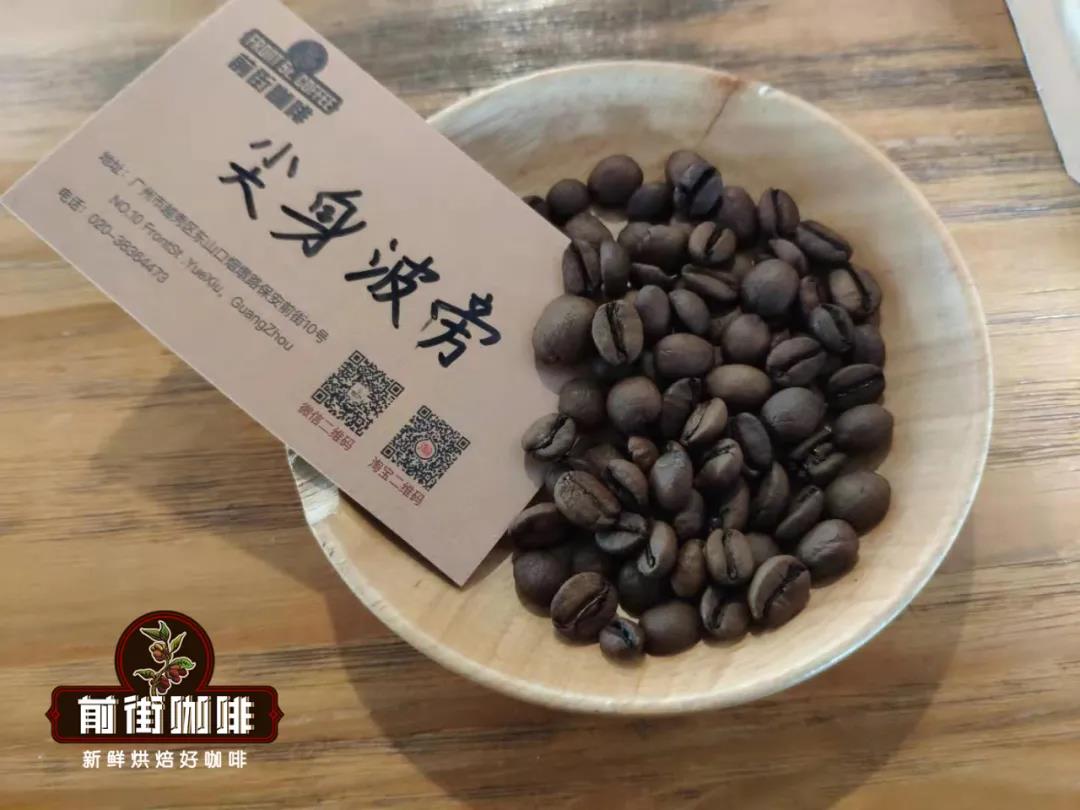
SL-28, SL-34 in Kenya
Scott's lab selected 42 varieties from different habitats and studied their yield, quality, drought resistance and disease resistance. SL-28 and SL-34 now account for the majority of Kenya's coffee production, while SL-34 is relatively more productive and requires a slightly lower elevation to grow, while SL-28 is suitable for middle and high altitudes and is drought-resistant but sensitive to major coffee diseases. SL28 is found in many parts of Kenya and is still very productive even at 60-80 years old. Genetic testing in recent years has also confirmed that the SL28 genome is closer to bourbon, while the SL34 genome is closer to iron pickup.

Qianjie found that the appearance of SL28 coffee beans is similar to that of bourbon varieties, and they are round and thick. On the other hand, the SL34 is similar to the iron-skinned Kadou-shaped beans, which are long and oval in shape, and look flat on the side. SL28 and SL34 are similar in flavor, with complex and changeable berry acidity and caramel sweet finish. Compared with SL28, SL34 has a heavier taste, more sour berries such as blackberries, and a balance of sweetness and sour with a caramel tail.
Front Street Coffee Kenya Asaria Coffee beans
Producing area: Sika Thika, Kenya
Processing plant: Asali honey processing plant
Altitude: 1550mi 1750m
Rating: AA TOP
Variety SL28, SL34
Treatment: 72-hour washing in Kenya
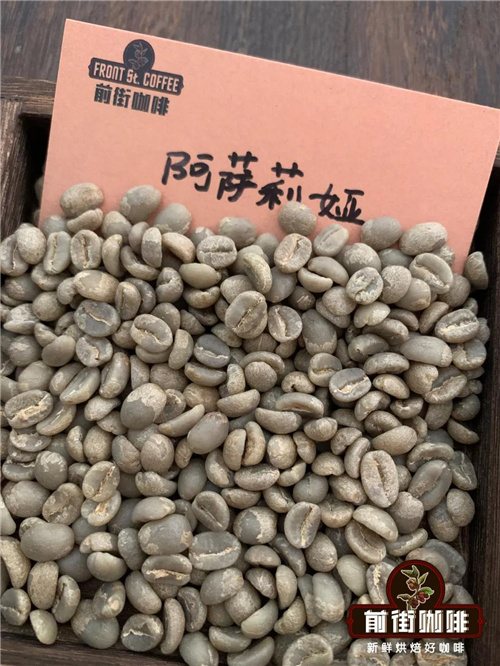
Front Street Coffee Coffee beans from Sassini Manor, Kenya
Origin: Ji'anbu producing area
Manor: Sassini Manor
Altitude: 1650 m
Grade: AA
Varieties: SL28, SL34
Treatment method: washing treatment

Pacas (Pacas)
Pacas is a natural variety of bourbon, first discovered by the Pacas family in El Salvador's Santa Ana region in 1949. In 1974, the Honduran Coffee Institute introduced Pacas and grew it in Honduras. Pacas and Kaddura are similar in shape, with a round and slender shape, but from the side, Pacas is thinner than bourbon. Pacas's coffee plants are smaller, can be planted more closely, and have higher yields than native bourbon.

Front street coffee Honduras Shirley coffee beans
Producing area: Masaguara, Honduras
Manor: Moca Manor
Altitude: 1500-1700 m
Variety: Kaddura, Kaduai, Pacas
Treatment: fine washing whisky barrel fermentation
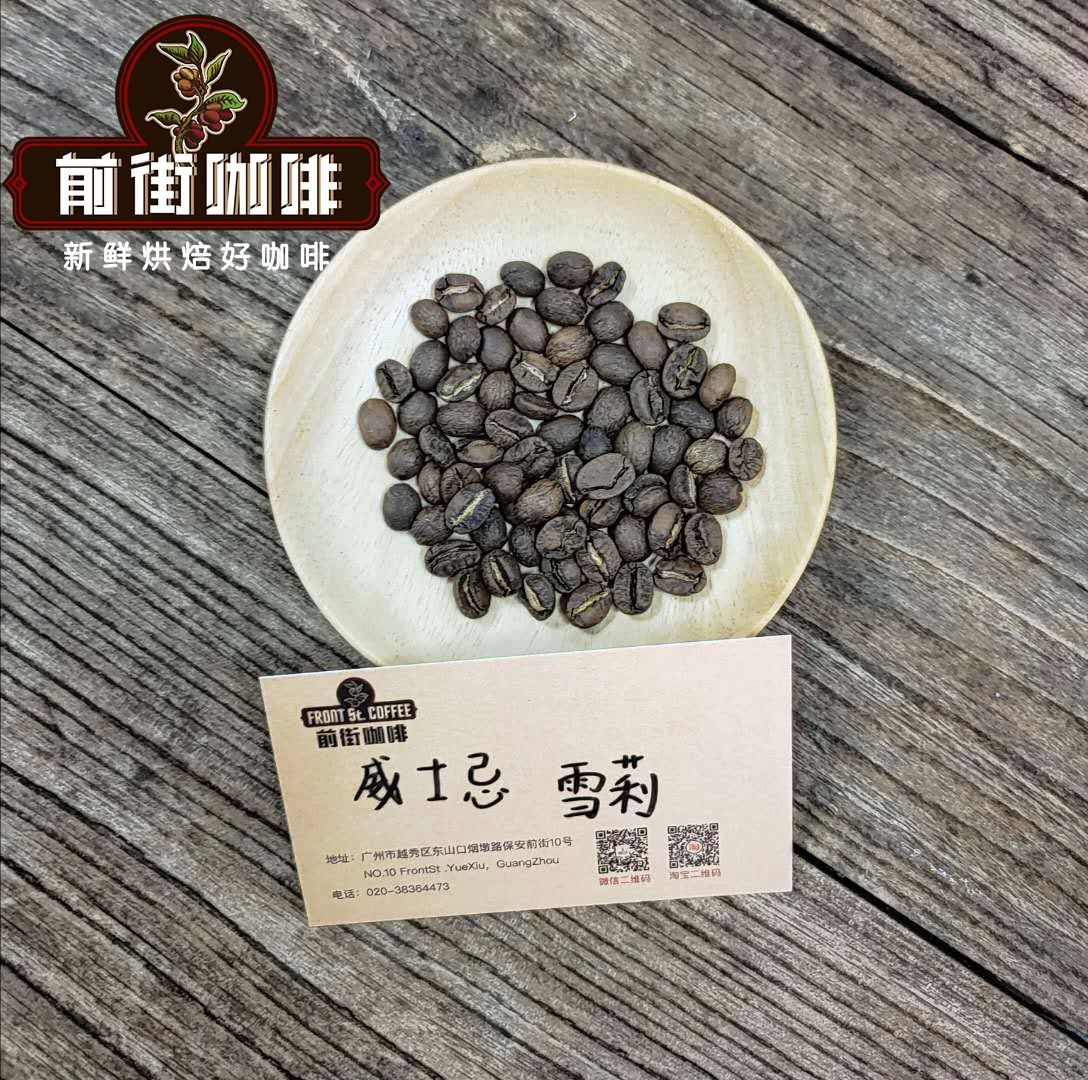
Kaddura (Caturra)
Kaddura is a single gene variety of bourbon, so its shape is similar to that of bourbon. The tail part of Kaddura species is more curved than bourbon, and its main feature is round and slender. It was found in Brazil in 1937 that the production capacity and disease resistance were better than bourbon, and the trees were shorter and easy to harvest. It has a good flavor, and more importantly, it is super adaptable and does not need shade trees, so it is also called Sun Coffee, which can adapt to high-density planting. Kaddura is suitable for planting at a low altitude of 700m to a high altitude of 1700 m, with strong adaptability, but the higher the altitude, the better the flavor and the yield will be relatively reduced.
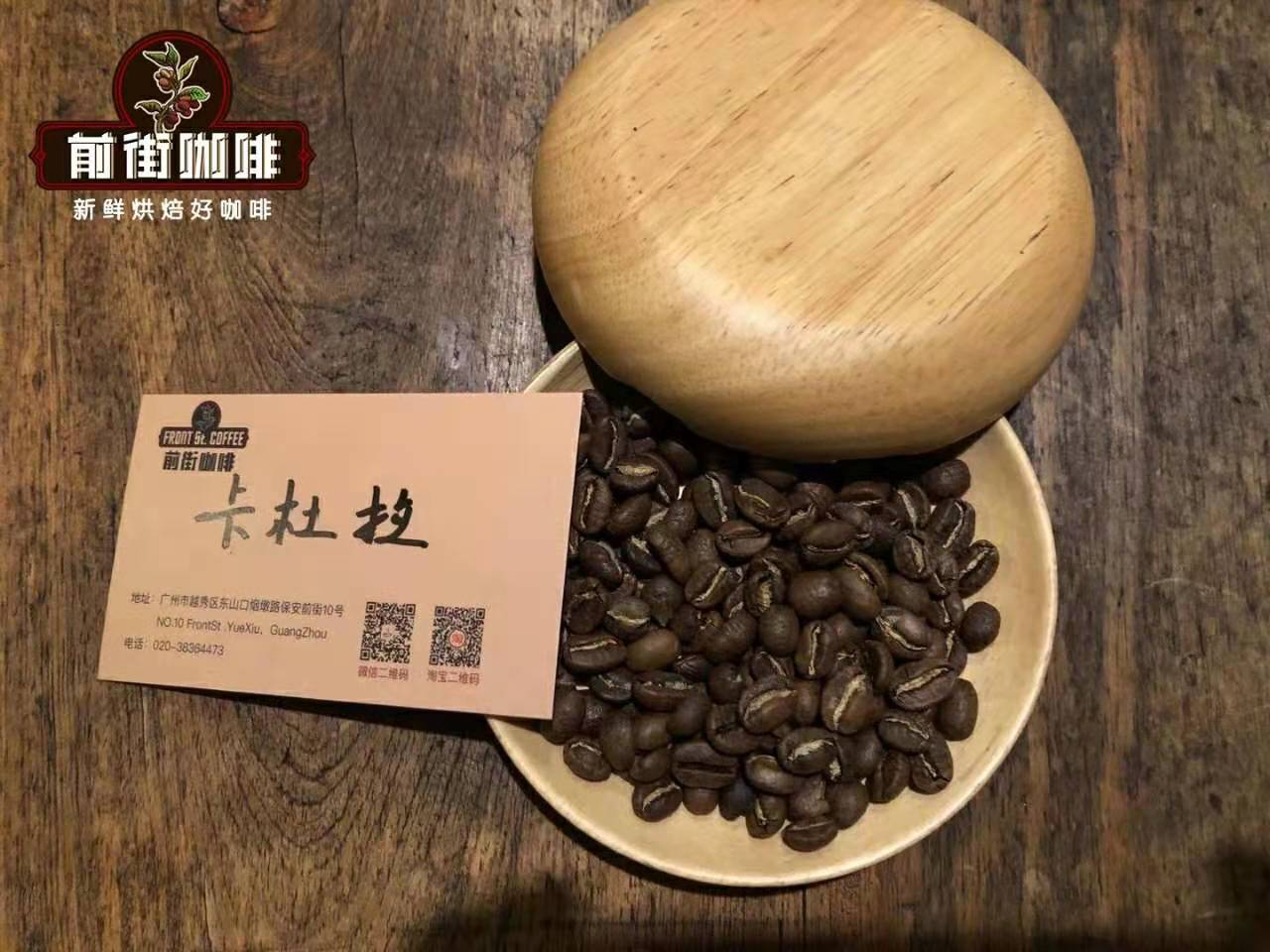
Front Street Coffee Columbia Flower Moon Night Coffee beans
Producing area: Huilan Esvidogatin Farm
Altitude: 1800m
Variety: Kaddura
Treatment method: anaerobic solarization treatment

Front street coffee Columbia Rose Valley Coffee beans
Producing area: Santander producing area
Manor: big Tree Manor
Altitude: 1700m
Variety: Kaddura
Treatment: anaerobic enzyme washing

New World (Mundo Novo)
The New World is the result of a natural cross between Bourbon and Sumatra iron pickup, first discovered in 1943 in Titeminelos, Sao Paulo, Brazil. New World was originally planted in New World City, now Uruppez. The New World has also spread to other countries, but it has not been widely planted locally for a variety of reasons. The new world coffee plant is tall, the leaf tip color is green or brown, the overall bean shape of coffee beans is round, and the particles are larger.
Kaduai (Catuai)
Kaduai is a hybrid of New World and Kaddura, so he is a hybrid with the slender, round body of Kaddura and the flat shape of the New World. It inherits the advantage of Kaddura's low height, and the result is solid and not easy to fall when the strong wind blows. But its overall flavor is more monotonous than Kaddura. Kaduai also has the difference between red fruit and yellow fruit. Kaduai, Kaddura, New World and bourbon are the four main coffee varieties in Brazil.

Kaduai is also widely grown in other countries, such as Kaduai in Honduras, which accounts for nearly half of the acreage. Kaduai is also grown in Costa Rica. Kaduai was introduced to Guatemala in 1970 and now accounts for about 20% of the country's production.
Front Street Coffee Costa Rican musicians Series Bach Coffee beans
Producing area: Tarazhu, Costa Rica
Manor: Carnett Manor
Treatment: raisin honey treatment
Variety: Huang Kadura
Altitude: 1900m

Front Street Coffee Costa Rican musicians Beethoven Coffee beans
Producing area: Tarazhu, Costa Rica
Manor: Carnett Manor
Treatment: washing treatment
Variety: Huang Kaduai
Altitude: 1900m
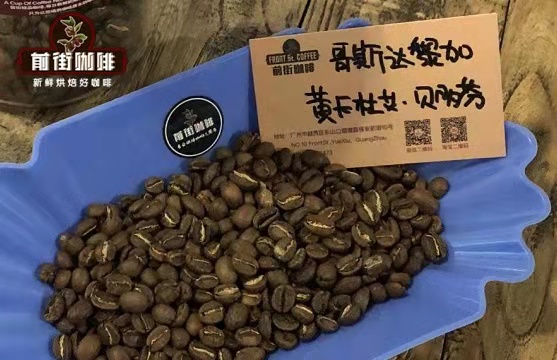
Front Street Coffee Costa Rican musicians Series Mozart Coffee beans
Producing area: Tarazhu, Costa Rica
Manor: Carnett Manor
Treatment method: raisin anaerobic honey treatment
Altitude: 1980 m
Variety: Kaddura, Kaduai

Tim (Time)
A natural hybrid found in East Timor, it is a hybrid of Arabica and Robusta. Chromosome 44, closer to Arabica; but bland flavor, Tim's low acidity, lack of character, often used to make low-cost formula beans.
Catimor
In 1959, the Portugal interbred Brazil Kadura and Tim to breed a hybrid second generation Kadura with super disease resistance and yield ability. Its raw beans are large and thick, with a slender tail. In recent years, botanists around the world have turned to Arabica and Katim for multiple generations of crossbreeding in an attempt to reduce the pedigree.

Qianjie coffee Yunnan small grain coffee
Producing area: Baoshan, Yunnan
Altitude: 1200 m
Variety: Katim
Treatment: washing
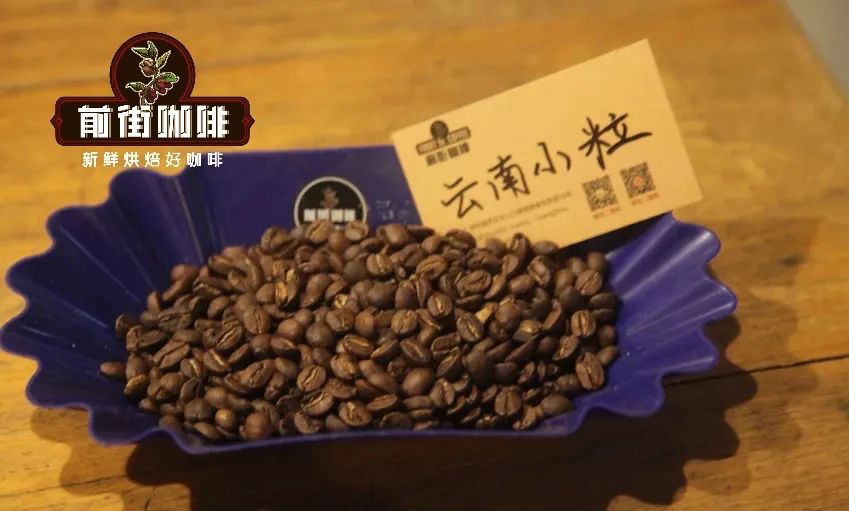
Rose summer (Geisha)
Rose summer comes from Mount Rosa in Ethiopia and was introduced to Panama from Costa Rica in 1963, but no farmer is willing to grow it because of its low production capacity. Panama is a country that mainly produces rose summer coffee.
Rosa rugosa is a native variety of Arabica in the Rosa region of Ethiopia. It has a large bean shape and is a coffee variety unique to Panama. From 1931 to 1932, it was imported to Kenya under the name of Abyssinian and Rosa respectively. In 1936, Kenya took the harvested Rosa seeds to Uganda and Tanzania for planting. In July 1953, Tanzania sent its offspring to Costa Rica, leaving the mother tree in its own country. In 1960, Panama officially cultivated Rose Summer.

In the rose summer coffee on the front street, the first is American rose summer, represented by the Panamanian emerald estate. The most prominent feature of the rose summer coffee is slender, pointed at both ends, fat and plump in the middle, and some good quality rose summer even has the size of Pacamara (18-19 mesh). Its distinguishing feature is very obvious. The second is the African Rose Summer, represented by the Rosa Village Manor in Ethiopia, the rose summer coffee variety Gori Rosa (looking for seeds in the Gori Rose Summer Forest) and Rose Xia 1931 (selected from a diverse forest population similar to Panama Rose Summer). Its appearance shows that the bean body is too long, smaller than the Panamanian rose summer, and the characteristics are not obvious.

The rose tree is thin and tall (up to 4.5 meters), with spreading branches and leaves, long green and red leaves, and late fruiting. Resistant to leaf rust, susceptible to berry disease and nematode, small fruit, medium and low yield. Panamanian rose summer flavor is very unique, the beans produced at high altitude have a good aroma, the finish is sweet and clean and distinctive, with jasmine and peach aromas, bright sour fruit, very supple taste.
Qianjie Coffee Jade Manor Red Standard Rose Summer Coffee beans
Producing area: Pokuit, Panama
Manor: Jade Manor
Altitude: 1600-1800 m
Variety: Rose summer
Treatment: insolation

Qianjie Coffee Jade Manor Green label Rosa Coffee beans
Producing area: Pokuit, Panama
Manor: Jade Manor
Altitude: 1600-1800 m
Variety: Rose summer
Treatment method: washing treatment

Qianjie Coffee Jade Manor Blue label Rose Summer Coffee beans
Producing area: Pokuit, Panama
Manor: Jade Manor
Altitude: 1400-1500 m
Variety: Rose summer
Treatment method: washing treatment

For more boutique coffee beans, please add private Qianjie coffee on Wechat. WeChat account: kaixinguoguo0925
Important Notice :
前街咖啡 FrontStreet Coffee has moved to new addredd:
FrontStreet Coffee Address: 315,Donghua East Road,GuangZhou
Tel:020 38364473
- Prev

The unique charm of SL28 flavor the source meaning of SL28 name
Freshly processed SL-28 and SL-34 beans. [photo: counter-cultural coffee on Flickr] genetic diversity among coffee plants is one of the most exciting coffee tasters with all stripes. Although the gene pool of Arabica coffee has become shallower and shallower outside Ethiopia, at least one type of coffee is exciting: if you don't encounter it
- Next
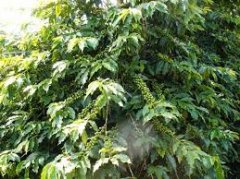
Introduction of Brazilian Bourbon Natural Hybrid Acaia Coffee beans introduction of coffee beans unique to Brazil
Acai Variety: Acaia Association: Mundo Novo Origin: Brazil grows above 800m Best Type: Sumatra (typical) / bourbon hybrids are common: Brazilian main color: red fruit size: large leaf characteristics: large, intermediate botany between Typica and bourbon: natural hybridization special hint: a very rare variety. I used to be excellent in Brazil.
Related
- Guji coffee producing area of Guji, Ethiopia: Humbela, Shakiso, Wulaga
- What is the most expensive variety of Qiloso in BOP multi-variety group?
- How to store the coffee beans bought home?
- Why are Yemeni coffee beans so rare now?
- Ethiopian Sidamo all Red Fruit Sun Sun Santa Vini Coffee beans
- SOE is mostly sour? What does it mean? Is it a single bean? what's the difference between it and Italian blending?
- Is Italian coffee beans suitable for making hand-brewed coffee?
- How to choose coffee beans when making cold coffee? What kind of coffee beans are suitable for making cold coffee?
- Just entered the pit to make coffee, what kind of coffee beans should be chosen?
- Can only Japan buy real Blue Mountain Coffee? What are authentic Jamaican Blue Mountain coffee beans?

